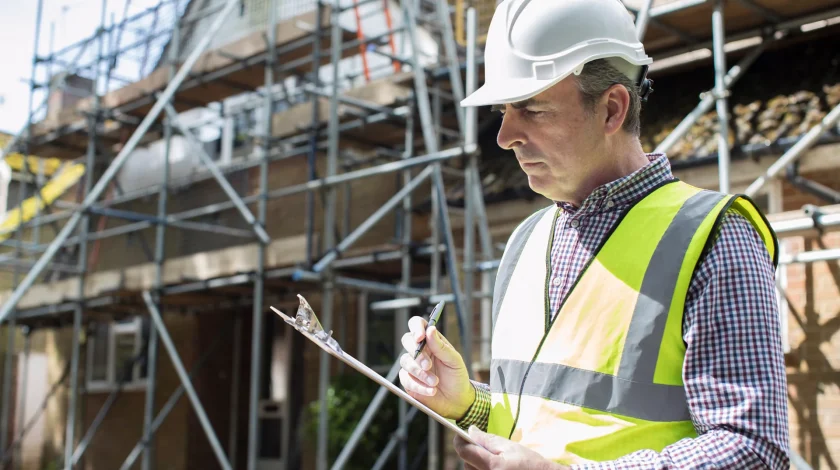Co-authored by Jace Coaldrake-Redhouse
Building defects are a common cause of disputes between homeowners and building contractors. They can range from minor issues like small plasterboard cracks to expensive and potentially dangerous structural and waterproofing issues.
This article will discuss what building defects are and how to respond when they occur.
What is a defect?
The word defect is often used to mean two different things:
- an observable problem with a building – for example: salts leaching through mortar joints and staining bricks; or
- a failure by the building contractor to conduct works in accordance with the building contract – for example: a failure to install a waterproofing membrane in accordance with the plans.
Building contractors are responsible for defects resulting from their failures to comply with the building contract or a duty of care. They are not necessarily responsible for all observable problems in a building. A building might have observable problems even if the building contractor has done their job perfectly. For example, a perceived defect may arise from poor design, the nature of the chosen materials or movement of the ground beneath the building.
Whether or not a defect is one that gives rise to a claim against a building contractor will depend upon whether the evidence shows that the observable problem is caused by a failure of the building contractor to properly conduct the works.
Salt stains on masonry, for example, may be evidence of a building defect that gives rise to a claim against a building contractor. Sometimes though, salt stains are the ordinary result of rainwater passing through mortar joints. To know, a building inspector may be required to investigate if the leaching is resulting from a cause attributable to the building contractor.
What are the statutory warranties?
In NSW and other states in Australia, a statutory warranties scheme has been introduced to protect homeowners from building defects. Regardless of the terms of the contract, the Home Building Act 1989 (NSW) (the Act) places statutory warranties into most residential building contracts for works in NSW. These warranties require the building contractor to:
- carry out the work with due care and skill in accordance with the plans and specifications of the contract;
- warrant that all materials supplied will be good and suitable for the purpose for which they are used, and unless the contract allows, will be new;
- comply with all relevant laws;
- complete the work with due diligence within the time stipulated in the contract. If no time is stipulated within the contract, then within a reasonable timeframe; and
- complete the work with the result that the dwelling is reasonably fit for occupation as a dwelling.
If a building contractor fails to comply with any of the above warranties, a homeowner may have a claim for defective building works.
How do the Australian Standards and the Building Code of Australia (BCA) relate to defects?
The Australian Standards and the BCA provide standards and guidelines for the design and construction of buildings. The statutory warranties, as noted above, require that a building contractor’s work complies with all relevant law. If the building works are not completed in accordance with the Australian Standards or BCA requirements, the work may be considered defective under the statutory warranties.
This does not mean, however, that just because a building contractor’s work complies with the BCA or the Australian standards, that their work is not defective.
What should you do if you have defects in your property?
If work is still ongoing or if the works are still within a defects liability period, it is important to check the terms of the building contract. The terms will determine what rights the building contractor and the homeowner have with respect to defects. Homeowners must be very careful about withholding payments and building contractors must be careful about suspending works. Failing to comply with contract terms may result in contract breach and termination.
If you find defects in your property, it is always best to make records of the defects straight away with photographs and a written description.
Under the Act, homeowners have a duty to:
- mitigate any loss caused by defects;
- notify the building contractor of any defects; and
- allow reasonable access to the property to allow the building contractor to rectify the defect.
Failing to do so may reduce or eliminate a homeowner’s claim under the statutory warranties.
What if the defects aren’t rectified?
If a building contractor refuses to rectify defects there are a number of avenues available to a homeowner.
NSW Fair Trading will accept building defects complaints in relation to all class 1 and class 2 dwellings. This includes freestanding houses, townhouses or row houses, all the way up to four-storey or high-rise dwellings. Fair Trading can assist in inspecting the defects and issuing rectification orders.
If you have lost money as a result of defects, or the building contractor fails to comply with a repair order, you may choose to pursue your building contractor through the NSW Civil and Administrative Tribunal (NCAT).
NCAT is the preferred jurisdiction for most building claims within NSW. Claims for defects can also be pursued through the Local Court, District Court or the Supreme Court. The choice of Court will depend on the value of your claim and the complexity of the issues. The jurisdictional rules of NCAT and the Courts can be complicated. The correct venue for a claim can depend upon both when the defects arose and the dollar amount of the claim.
The Act also places limitations on when proceedings can be commenced for defects under the statutory warranties. There is a six-year limit for major defects and a two-year limit for all other defects.
It’s important to obtain legal advice before initiating court or tribunal proceedings. Getting the jurisdiction wrong, or not filing a claim within the limitation period, can result in costly delays and the potential of losing otherwise valid claims altogether.
Defects in building works can have serious consequences for both building contractors and homeowners. If you have found defects in your property, or require assistance pursuing your claim, reach out to our Building and Construction team.














